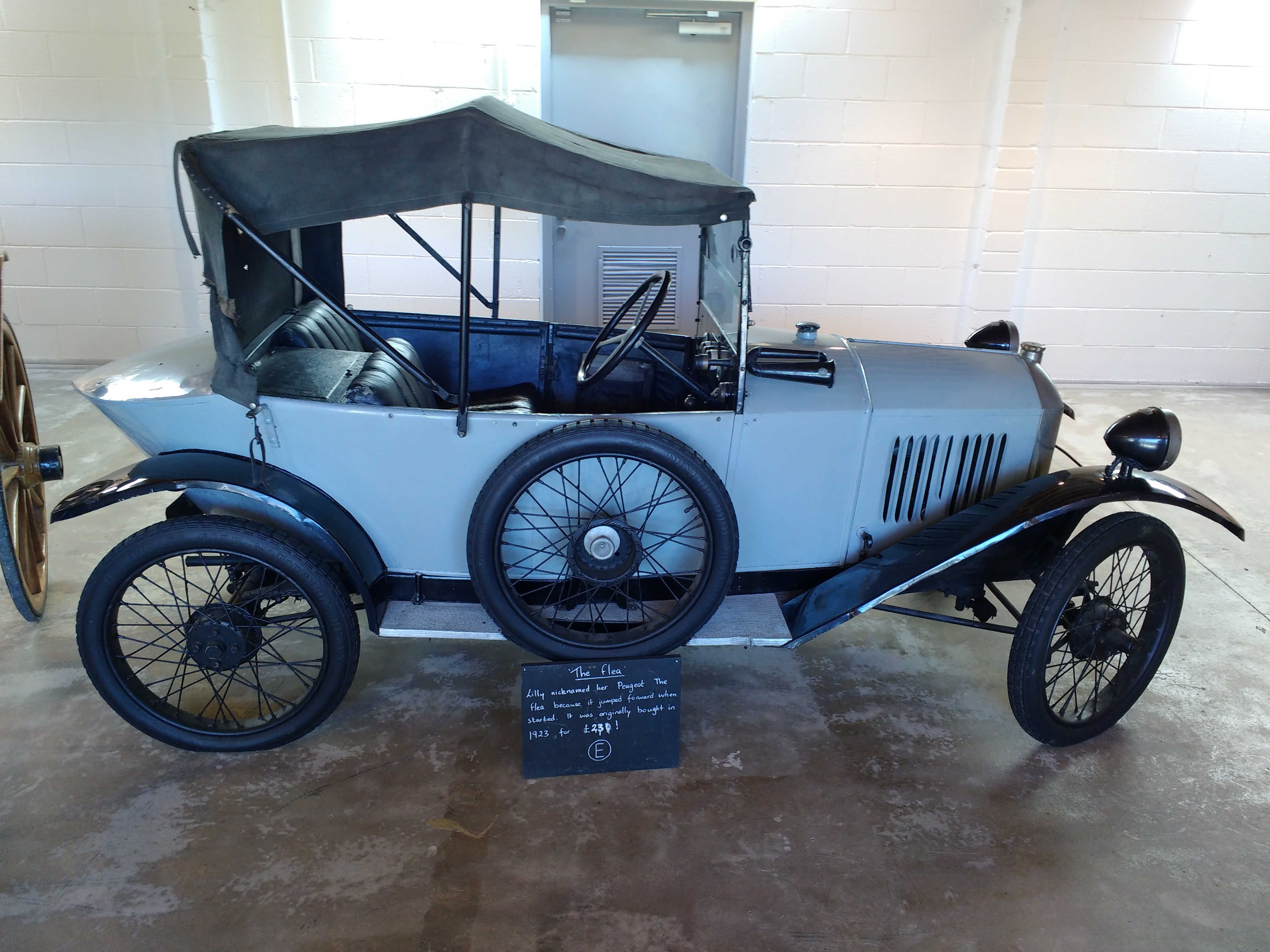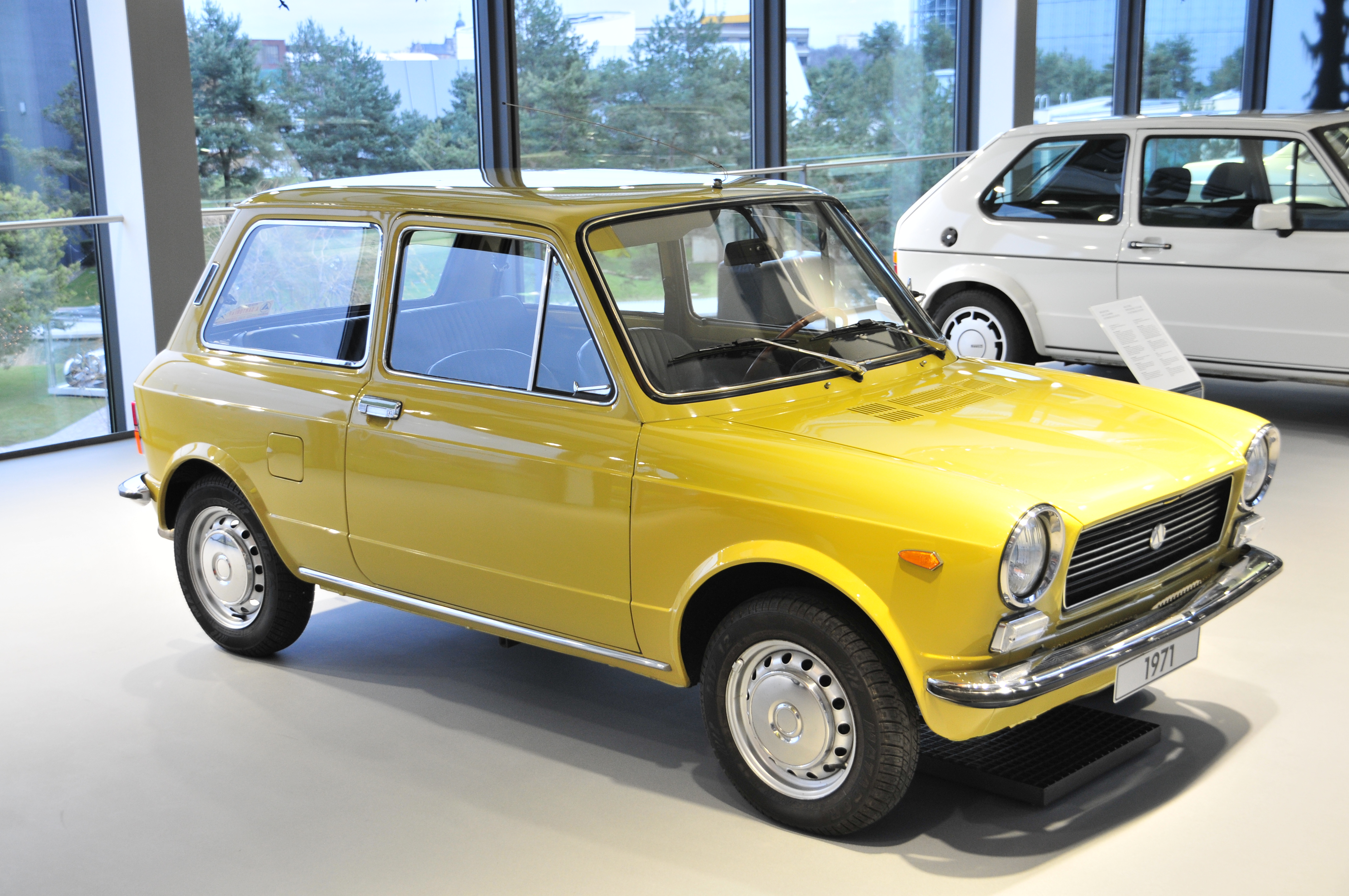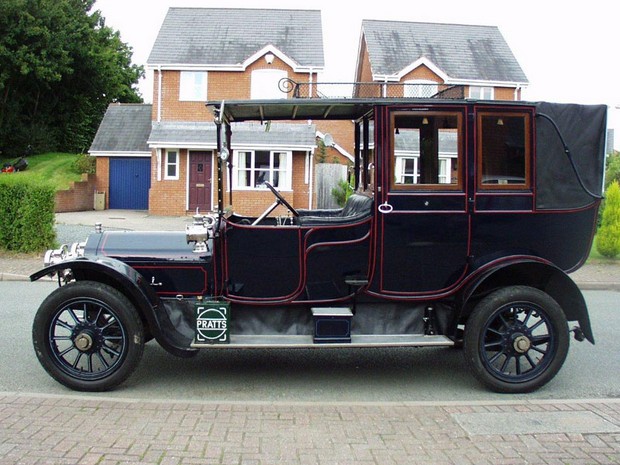|
Peugeot 5CV
Peugeot 5CV was a popular name for several models of the Peugeot Type 172 between 1925 and 1929. Debut The first of the 5CV series was the Type 172 BC, itself a new model, though similar to the Quadrilette, which was still sold through 1924. The Type 172 BC carried over the 667 cc engine from the Quadrilette, but with power up to . It debuted at the Tour de France automobile in 1924. Models Small styling changes and a new engine changed the Type 172 BC into the Type 172 R in 1926. The engine was a 720 cc I4 and produced the same power rating as before, but torque was quoted appreciably higher. In 1928, the engine was replaced with a smaller 695 cc powerplant that nevertheless produced more power, at . A smaller engine and a wider track nevertheless lowered the rating of the new Type 172 M tax classification to 4CV. Production Total production of the Type 172 models in this timeframe amounted to 48,285 units. __NOTOC__ References5CV Type 172 BC [...More Info...] [...Related Items...] OR: [Wikipedia] [Google] [Baidu] |
Peugeot
Peugeot (, , ) is a French brand of automobiles owned by Stellantis. The family business that preceded the current Peugeot companies was founded in 1810, with a steel foundry that soon started making hand tools and kitchen equipment, and then bicycles. On 20 November 1858, Émile Peugeot applied for the lion trademark. Armand Peugeot (1849–1915) built the company's first car steam tricycle, in collaboration with Léon Serpollet in 1889; this was followed in 1890 by an internal combustion car with a Panhard- Daimler engine. The Peugeot company and family are originally from Sochaux. Peugeot retains a large manufacturing plant and Peugeot museum there. In February 2014, the shareholders agreed to a recapitalisation plan for the PSA Group, in which Dongfeng Motors and the French government each bought a 14% stake in the company. Peugeot has received many international awards for its vehicles, including six European Car of the Year awards. Peugeot has been involved suc ... [...More Info...] [...Related Items...] OR: [Wikipedia] [Google] [Baidu] |
Peugeot Quadrilette
Peugeot Quadrilette is the popular name for the Peugeot Type 161 and Peugeot Type 172 and associated models produced between 1921 and 1924. Type 161 Peugeot created the Type 161 to reverse its financial woes following the Great War. It was a cheap, practical, very small economy car and was nicknamed the Quadrilette when shown at the 1920 Brussels Motor Show. It was available for sale in 1921. In order to put it into the minimal tax bracket—that of cyclecars, for which the tax was 100 francs The franc is any of various units of currency. One franc is typically divided into 100 centimes. The name is said to derive from the Latin inscription ''francorum rex'' (King of the Franks) used on early French coins and until the 18th centu ... annually—the 4-cycle, 4-cylinder water-cooled engine displaced a mere 667 cc and produced . Taking advantage of this small power output was a very lightweight body, under . The vehicle's width was so diminutive that the two seats were ... [...More Info...] [...Related Items...] OR: [Wikipedia] [Google] [Baidu] |
Peugeot Type 190
The Peugeot Type 190 S is a model of Peugeot produced between 1928 and 1931. The Type 190 was launched in late 1928 and sold alongside the lightweight Peugeot 5CV (itself based on the Quadrilette), a best-seller of the 1920s, which it was intended to replace. The Type 190 was also a small vehicle, but more traditional compared to earlier models. Its body was available in torpedo and spider configurations. The Type 190 carried over the small four-cylinder 695 cc engine from the 5CV, which developed and could push the car to a maximum speed of . The type 190 was quite successful and a total of more than 33,000 vehicles were produced. In 1929, its intended successor, the Peugeot 201, was launched, though production of the Type 190 ran until 1931. Traditional body construction The 190S was one of the last Peugeot models to come with a timber-frame body. Each piece of the frame was individually shaped from ash or beech wood, using traditional carpenters' tools. End of traditional ... [...More Info...] [...Related Items...] OR: [Wikipedia] [Google] [Baidu] |
Supermini
The B-segment is the second smallest of the European segments for passenger cars between the A-segment and C-segment, and commonly described as "small cars". The B-segment is the largest segment in Europe by volume, accounting for 20 percent of total car sales in 2020 according to JATO Dynamics. Definition The European segments are not based on size or weight criteria. In practice, B-segment cars have been described as having a length of approximately from up to , and may vary depending on the body styles, markets, and era. In some cases, the same car may be differently positioned depending on the market. The Euro NCAP vehicle class called "Supermini" also includes smaller A-segment cars alongside B-segment cars. In Britain, the term "supermini" is more widely used for B-segment hatchbacks. The term was developed in the 1970s as an informal categorisation, and by 1977 was used regularly by the British newspaper ''The Times''. By the mid-1980s, it had widespread use in Brita ... [...More Info...] [...Related Items...] OR: [Wikipedia] [Google] [Baidu] |
FR Layout
In automotive design, a FR, or front-engine, rear-wheel-drive layout is one where the Internal combustion engine, engine is Front-engine design, located at the front of the vehicle and rear-wheel-drive, driven wheels are located at the rear via a drive shaft. This was the traditional automobile layout for most of the 20th century. Modern designs commonly use the front-engine, front-wheel-drive layout (FF). It is also used in high-floor Bus, buses and School bus, school buses. Front mid-engine, rear-wheel-drive layout In automotive design, a front mid-engine, rear-wheel-drive layout (FMR) is one that places the internal combustion engine, engine in the front, with the rear wheels of vehicle being driven. In contrast to the front-engine, rear-wheel-drive layout (FR), the engine is pushed back far enough that its center of mass is to the rear of the front axle. This aids in weight distribution and reduces the moment of inertia, improving the vehicle's car handling, handling. The me ... [...More Info...] [...Related Items...] OR: [Wikipedia] [Google] [Baidu] |
Straight-four Engine
A straight-four engine (also called an inline-four) is a four-cylinder piston engine where cylinders are arranged in a line along a common crankshaft. The vast majority of automotive four-cylinder engines use a straight-four layout (with the exceptions of the flat-four engines produced by Subaru and Porsche) and the layout is also very common in motorcycles and other machinery. Therefore the term "four-cylinder engine" is usually synonymous with straight-four engines. When a straight-four engine is installed at an inclined angle (instead of with the cylinders oriented vertically), it is sometimes called a slant-four. Between 2005 and 2008, the proportion of new vehicles sold in the United States with four-cylinder engines rose from 30% to 47%. By the 2020 model year, the share for light-duty vehicles had risen to 59%. Design A four-stroke straight-four engine always has a cylinder on its power stroke, unlike engines with fewer cylinders where there is no power stroke occu ... [...More Info...] [...Related Items...] OR: [Wikipedia] [Google] [Baidu] |
Manual Transmission
A manual transmission (MT), also known as manual gearbox, standard transmission (in Canada, the United Kingdom, and the United States), or stick shift (in the United States), is a multi-speed motor vehicle transmission (mechanics), transmission system, where gear changes require the driver to manually select the gears by operating a gear stick and clutch (which is usually a foot pedal for cars or a hand lever for motorcycles). Early automobiles used ''sliding-mesh'' manual transmissions with up to three forward gear ratios. Since the 1950s, ''constant-mesh'' manual transmissions have become increasingly commonplace and the number of forward ratios has increased to 5-speed and 6-speed manual transmissions for current vehicles. The alternative to a manual transmission is an automatic transmission; common types of automatic transmissions are the Automatic transmission#Hydraulic automatic transmissions, hydraulic automatic transmission (AT), and the continuously variable transmissio ... [...More Info...] [...Related Items...] OR: [Wikipedia] [Google] [Baidu] |
Tax Horsepower
The tax horsepower or taxable horsepower was an early system by which taxation rates for automobiles were reckoned in some European countries such as Britain, Belgium, Germany, France and Italy; some US states like Illinois charged license plate purchase and renewal fees for passenger automobiles based on taxable horsepower. The tax horsepower rating was computed not from actual engine power but by a mathematical formula based on cylinder dimensions. At the beginning of the twentieth century, tax power was reasonably close to real power; as the internal combustion engine developed, real power became larger than nominal taxable power by a factor of ten or more. Britain The so-called RAC horsepower rating was devised in 1910 by the RAC at the invitation of the British government. The formula is: : \frac where: : D is the diameter (or bore) of the cylinder in inches, : n is the number of cylinders The formula was calculated from total piston surface area (i.e., "bore" only). The fac ... [...More Info...] [...Related Items...] OR: [Wikipedia] [Google] [Baidu] |
Peugeot Vehicles
Peugeot (, , ) is a French brand of automobiles owned by Stellantis. The family business that preceded the current Peugeot companies was founded in 1810, with a steel foundry that soon started making hand tools and kitchen equipment, and then bicycles. On 20 November 1858, Émile Peugeot applied for the lion trademark. Armand Peugeot (1849–1915) built the company's first car steam tricycle, in collaboration with Léon Serpollet in 1889; this was followed in 1890 by an internal combustion car with a Panhard- Daimler engine. The Peugeot company and family are originally from Sochaux. Peugeot retains a large manufacturing plant and Peugeot museum there. In February 2014, the shareholders agreed to a recapitalisation plan for the PSA Group, in which Dongfeng Motors and the French government each bought a 14% stake in the company. Peugeot has received many international awards for its vehicles, including six European Car of the Year awards. Peugeot has been involved successf ... [...More Info...] [...Related Items...] OR: [Wikipedia] [Google] [Baidu] |







